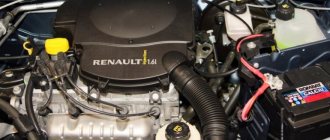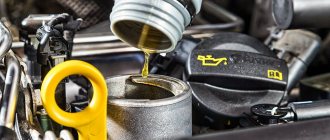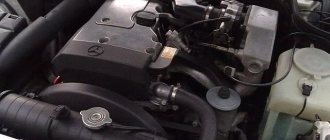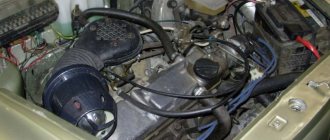The BMW 5 Series e34 is one of the most beloved, most popular and most charismatic cars of the 90s of the last century. With his appearance, he created a real sensation, appealing to millions of owners. In the CIS countries, this car gained fame as a “ransomware fighting vehicle”; naturally, it was operated in appropriate conditions.
Not many worthy examples have survived to this day, but this fact does not become an obstacle, so the E34 is becoming increasingly in demand among young people, despite its advanced age.
Directly about the operating features and characteristics: what will you encounter when you become the owner of a BMW 5 E34?
BMW 5 E34 engines
First generation of engines
Before the model was updated, it was equipped with M20, M30, M40 and M21 engines. All units migrated from the previous generation E28. Absolutely all of the above engines are examples of reliability; in particular, the M30 turned out to be the standard, adding to the list of million-plus engines.
The M30 was produced in two versions: B30 and B35, with a volume of 3 (188 hp) and 3.5 liters (211 hp). These motors perform well in terms of elasticity, and also do not differ in particular “torsion”.
Slightly less voluminous M20 (from 2 to 2.7 liters), likes high speeds, has a timing belt in the timing drive. The motor hardware is strong, but the electronics cause problems.
Problems often arise with the mass air flow sensor; the engine compartment wiring crumbles due to age, resulting in a malfunction of the engine sensors and on-board system.
The cooling system problem dates back to the 70s. In terms of BMW, the use of a viscous coupling turned out to be not the best idea against electric fans.
The cooling radiator is too small for six-cylinder engines, so it requires frequent cleaning and refilling only with high-quality antifreeze. The result of overheating is, at a minimum, replacing the valve stem seals, and at a maximum, changing the cylinder head assembly.
It is recommended to avoid versions of the BMW 5 Series E34 with a diesel engine. Despite the mechanical fuel injection pump, the injection control system here is electronic, and this adds a fair amount of problems. With diesel units, BMW is still doing poorly, except for the noteworthy M47 and M57.
Second generation of BMW 5 E34 engines
Since 1990, the installation of the newest M50 engine began, on the basis of which a lot of engines would subsequently be produced, until 2003. Now the engine has a timing chain drive, a VANOS variable phase system on the intake and exhaust, as well as 4 valves per cylinder.
The 2-liter M50V20 engine produced 150 hp, and the 2.5 liter M50V25 unit produced 192 hp. The subsequent M52 engine is not much different from its predecessor, except that it received an aluminum block instead of cast iron.
M60 V8 (3.0 and 4.0) is the pride of the BMW 5 Series E34. Although most drivers are quite skeptical about it - due to the use of Nikasil coating on the cylinders, nevertheless, this option has taken root. The power of the 3-liter is 218 hp, and the 4-liter is 286. By the way, with the V8, a gearbox was used instead of a steering rack.
Model power units
In Europe, the third generation sedan of the fifth series was presented with a wide selection of power units:
| Engine | Car model | Volume, cubic cm. | Maximum power, l. With. | Fuel type | Average consumption |
| М40В18 | 518i | 1796 | 113 | Petrol | 8,7 |
| М20В20 | 520i | 1990 | 129 | Petrol | 10,3 |
| М50В20 | 520i | 1991 | 150 | Petrol | 10,5 |
| М21D24 | 524td | 2443 | 115 | Diesel | 7,1 |
| М20В25 | 525i | 2494 | 170 | Petrol | 9,3 |
| М50В25 | 525i/iX | 2494 | 192 | Petrol | 10,7 |
| М51D25 | 525td/tds | 2497 | 143 | Diesel | 8,0 |
| М30В30 | 530i | 2986 | 188 | Petrol | 11,1 |
| М60В30 | 530i | 2997 | 218 | Petrol | 10,5 |
| М30В35 | 535i | 3430 | 211 | Petrol | 11,5 |
| М60В40 | 540i | 3982 | 286 | Petrol | 15,6 |
Let's look at the most popular engines.
М40В18
The first in-line 4-cylinder gasoline engine of the M 40 family. They began to be equipped with cars in 1987 as a replacement for the outdated M 10 engine.
The unit was used only on units with index 18i.
М40В18
Installation Features:
- Cast iron cylinder block;
- 8-valve head with single camshaft;
- Thanks to hydraulic compensators, there is no need to adjust the valves;
- Belt drive of the gas distribution mechanism.
According to expert reviews, this unit is rather weak for a five. Despite the economical fuel consumption and the absence of problems with increased oil consumption, drivers note the lack of dynamics inherent in the cars of the series.
The timing belt requires special attention. Its resource is only 40,000 km. A broken belt is guaranteed to bend the valves, so maintenance regulations should be followed.
With careful operation, the engine life exceeds 300,000 km.
It is worth noting that a limited series of engines with a similar volume running on a gas mixture was produced. A total of 298 copies rolled off the assembly line, which were installed on the 518 g model.
М20В20
The engine was installed on BMW 5 Series cars with the index 20i. The engine was produced between 1977 and 1993. The first engines were equipped with carburetors, which were later replaced by an injection system.
М20В20
Among car enthusiasts, due to the specific shape of the collector, the engine received the nickname “spider”.
Distinctive features of the unit:
- 6-cylinder in-line engine;
- Cast iron block and aluminum head for 12 valves;
- Gas distribution mechanism with one shaft and belt drive;
Due to the lack of hydraulic compensators, it is necessary to adjust the valves at intervals of 15,000 km.
The main disadvantage of the installation is the unfinished cooling system, which has a tendency to overheat.
Power 129 l. With. - a weak indicator for such a heavy car. However, it is perfect for lovers of leisurely trips - quiet operation allows you to significantly save fuel.
М50В20
The engine is the smallest inline six. Serial production was launched in 1991 as a replacement for the M20V20 power unit. The modification affected the following nodes:
- Four valves per cylinder instead of two;
- Two camshafts operating on the DOHC system;
- A phase shifter mechanism was introduced on the intake shaft - VANOS;
- Timing chain drive;
- Modernization of the ignition system - it has become electronic, with a separate coil for each spark plug.
The main difficulties in operation are associated with malfunctions of the ignition coils and injectors, which become clogged when using low-quality gasoline. Approximately every 100,000 you will have to change the valve stem seals. Otherwise, increased engine oil consumption may occur. Some owners are faced with malfunctions of the VANOS system, which can be solved by purchasing a repair kit.
Despite its age, the engine is considered one of the most reliable. As practice shows, with careful handling, the service life before overhaul can reach 500-600 thousand km.
М50В20
М21D24
Diesel inline six with a turbine, developed on the basis of the M20 gasoline engine. It features an aluminum overhead camshaft head. The power supply system is equipped with a distribution-type injection pump manufactured by Bosch. To control the injection there is an electronic control unit ME.
In general, the unit is considered quite reliable without any problems in operation. Despite this, the engine was not popular with owners due to its low power.
М21D24
М20В25
Gasoline inline six with fuel injection system. It is a modification of the M20V20 engine. Installed on 5 Series BMW 525i cars in the E 34 body. Features of the unit:
- Updated Bosh Motronic injection system;
- The cylinder diameter has been increased from 80 to 84 mm;
- Crankshaft with increased stroke (75 mm instead of 66);
- Extended connecting rods – from 130 to 135 mm;
- Timing belt drive with a service life of 50,000 km.
The main advantages of the engine are good service life and excellent dynamics. Acceleration time to 100 km/h is 9.5 seconds.
Like other models in the family, the motor has problems with the cooling system. In the event of a malfunction, the engine can easily overheat. In addition, after 200-250 thousand kilometers the cylinder head will have to be changed due to wear on the camshaft beds.
М20В25
М50В25
A representative of the new family, which replaced the previous model. The main changes concern the cylinder head - it was replaced with a more modern one, with two camshafts for 24 valves. In addition, the VANOS system was introduced and hydraulic compensators were installed. Other changes:
- Timing chain drive;
- Engine torque and noise have been optimized;
- Reduced fuel consumption and reduced toxicity;
- An electronic ignition system has been introduced;
- Bosch Motronic 3.1 control unit.
The unit inherited problems and difficulties in operation from its predecessor.
М50В25
М51D25
Modification of a diesel unit. The predecessor was accepted by car enthusiasts without much enthusiasm - the main complaints concerned low power. The new version is more dynamic and has increased power – this figure reaches 143 hp. With.
М51D25
The engine is a straight six with an in-line arrangement of cylinders. The cylinder block is made of cast iron, and its head is made of aluminum. The main changes concern the gas recirculation system and the operating algorithm of the high-pressure fuel pump.
М30В30
The engine was installed on BMW 5 Series cars with the index 30i. This line is considered the most successful in the history of the concern. The engine is a 6-cylinder in-line unit with a volume of 3 liters.
A distinctive feature is a gas distribution mechanism with a single shaft. Its design did not change during the entire period of production of the engine - from 1971 to 1994.
М30В30
Among car enthusiasts it is known as the “Big Six”.
The problems are no different from the larger brother of the line - M30B35.
М30В35
A large-capacity in-line six petrol engine, which was installed on BMW cars with the 35i index.
The engine differs from its older brother - M30V30 - by an increased piston stroke and a larger cylinder diameter. The gas distribution mechanism is equipped with one shaft for 12 valves - 2 for each cylinder.
The main problems with engines are related to overheating. This is a common disease of 6-cylinder units from the German manufacturer. Failure to correct faults in a timely manner can lead to disruption of the cylinder head plane, as well as the formation of cracks in the block.
Despite the fact that this power unit is considered outdated, many car enthusiasts prefer to use this particular model. The reasons for the choice are ease of maintenance, good engine life and the absence of any special problems.
М60В40/В30
A striking representative of high-power units was produced from 1992 to 1998. It replaced the M30B35 as an intermediate link between in-line sixes and large V12 engines.
The engine is an 8-cylinder unit with a V-shaped cylinder arrangement. Distinctive features:
- Aluminum block with camber angle 90º;
- Nikasil liners and forged crankshaft;
- Timing belt with two camshafts and chain drive;
- Individual ignition coils;
- Engine management system Bosch Motronic 3.3.
М60В40
Owners of the M60V40 note an increased level of vibration at idle. The problem is usually solved by adjusting the valve timing. Also, it would be a good idea to check the boat gas valve, lambda, and also measure the compression in the cylinders. The engine is very sensitive to fuel quality. Working on bad gasoline leads to rapid wear of the nikasil.
As practice shows, the service life of the unit is 350-400 thousand km.
In 1992, on the basis of this engine, as a replacement for the M30V30, a more compact version of the V-shaped eight, the M60V30, was developed. The main changes affected the crankshaft - the crankshaft was replaced with a short-stroke one, and the cylinder diameter was reduced from 89 to 84 mm. The gas distribution and ignition systems were not modified. In addition, the electronic control unit remains the same.
The unit also adopted shortcomings in operation from its predecessor.
Features of the BMW 5 series E34 transmission
Everything, even the most reliable, has its resource. Automatic and manual transmissions from ZF and Getrag are no exception. Before restyling, a four-speed 4HP22 transmission was installed as an automatic transmission, after which a five-speed 5HP18 was installed, which turned out to be less reliable.
Often, all the wires are pulled out of the car, so finding a “live” automatic transmission in a BMW 5 E34 is extremely difficult, due to the high cost of repairs.
Manual transmissions are more durable; the main thing is to change the seals on time and fill in high-quality oil. The driveshaft needs to be serviced every 300,000.
The rear axle in more powerful engines has a differential lock with preload. The clutch system uses a dual-mass flywheel, so don’t be surprised by clutch kits for the BMW 5 in the E34 body for 25,000 rubles.
Engine
The BMW E34 was equipped with 4-, 6- and 8-cylinder petrol and 6-cylinder diesel engines with a volume of 1.8 to 4.0 liters.
Regarding the 34 with the 1.8-liter M40 / M43 (518i) engine, considering that you “caught” a well-maintained copy, in the future this engine will most likely upset you due to the lack of dynamics, which is directly related to the engine, which is rather weak for a five. It is also worth noting that a 1.8-liter version with natural gas (518g) was available, but this model is quite rare, since their production was limited (298 copies and only Touring).
The most popular in the CIS countries are the BMW E34 with 2.0 and 2.5 liter M50 engines. The engine has proven itself reliably over 20 years, subject to moderate loads and proper maintenance.
Particular attention should be paid to the 2.5-liter M50 engine without VANOS. To extend the service life of the engine, it is recommended to change the oil on time (every ~8-10,000 km), air filters and not to overheat the engine.
The restyled versions were equipped with the M50 engine with the VANOS system, the dynamics are a little better, and the consumption is more economical, but all this depends on the technical condition, and today this point practically does not play an important role.
The most significant factor is the condition of the motor. As mentioned above, the “youngest” copy is more than 20 years old, and taking into account the quality of repairs, vehicle maintenance, and driving style, the reliability of the engine decreases, be it the diesel M21 for 524td, M51 for 525td/525tds or gasoline V8 - M60 for 530i/540i .
When inspecting the engine during operation, special attention must be paid to its operation. For example, in an engine with high mileage, there may be a distinct sound of hydraulic compensators clicking, and the cause of these sounds may also be untimely oil changes. The problem with hydraulic compensators can be corrected by flushing if the sound disappears when the engine temperature rises to normal, otherwise it will most likely need to be replaced.
Check the operation of the viscous coupling. The fan is connected to the engine through a viscous coupling, and the viscous coupling is blocked by heat, as a result of which when the engine is warm, the fan should not spin freely.
Engine repair “pleasure” is quite expensive, so high-quality diagnostics are perhaps not recommended, but mandatory, especially if you are planning to buy a BMW E34 with a V8 (530i/540i).
In general, there will be no problems with the engines, the main thing is its condition, since the pre-restyling 535i with the M30 engine may well please and work for a long time if you use the BMW E34 wisely or restore it after “unfortunate riders”, but this is a personal decision for everyone.
BMW 5 E34 suspension
If you reassemble the suspension from new components, it will last 150,000 km. Its reliability is affected by neglect of braking before bumps and holes, poor-quality repairs, as well as driving until the last minute until the wheel falls off.
It is highly recommended to purchase expensive analogues for levers and silent blocks, otherwise savings will lead to premature costs.
It would not be superfluous to check the suspension to ensure its performance - besides, the price for repairing the rear chassis can cost more than 10 thousand rubles.
Body and interior
The body is the most sore spot of the BMW E34. It is extremely difficult to keep a car in its original condition. Unfortunately, corrosion resistance is extremely low, and few people treat cars. Traditionally, arches, sills, mounting points for chassis parts, bottoms of doors, edges of the trunk and windshield rot.
The presence of a hatch is more of a disadvantage than an advantage, due to the fact that the hatch only contributes to the clogging of the thresholds with dirt, despite the fact that few people are even aware of cleaning the drains.
It’s not uncommon to find a completely repainted car, and 9 out of 10 have putty – a mandatory attribute of the BMW 5 E34.
It is extremely important to inspect the front cups and side members to ensure they are appropriate for your specific vehicle. Such models often became the object of crime with the number of the car body being interrupted, and it would be superfluous to talk about the number of accidents, knowing the character of BMW.
There are no complaints about the interior: it has a classic layout. The finishing materials are luxurious, expensive, resistant to aging and abrasion, as well as to any mechanical stress. After two or three decades, the interior may look as if the car came off the assembly line yesterday, which is not uncommon.
Modifications (27)
| Model | Configuration | Max. speed | Acceleration 0-100 km/h |
| BMW 5er III (E34) Sedan | 540i 4.0 MT (286 hp), 400 N*m /4500 rpm (1992 - 1995) | 250 km/h | 6.3 sec. |
| BMW 5er III (E34) Sedan | 540i 4.0 AT (286 hp), 400 N*m /4500 rpm. (1992 - 1995) | 240 km/h | 6.8 sec. |
| BMW 5er III (E34) Sedan | 530i 3.0 MT (218 hp), 290 N*m /4500 rpm. (1992 - 1995) | 235 km/h | 7.7 sec. |
| BMW 5er III (E34) Sedan | 535i 3.4 MT (211 hp), 305 N*m /4000 rpm. (1988 - 1995) | 235 km/h | 7.7 sec. |
| BMW 5er III (E34) Sedan | 530i 3.0 MT (188 hp), 260 N*m /4300 rpm. (1988 - 1991) | 227 km/h | 8.5 sec. |
| BMW 5er III (E34) Sedan | 525i 2.5 MT (192 hp), 250 N*m /4200 rpm (1989 - 1995) | 230 km/h | 8.6 sec. |
| BMW 5er III (E34) Sedan | 535i 3.4 AT (211 hp), 305 N*m /4000 rpm. (1988 - 1995) | 231 km/h | 8.8 sec. |
| BMW 5er III (E34) Sedan | 530i 3.0 AT (218 hp), 290 N*m /4500 rpm. (1992 - 1995) | 232 km/h | 8.8 sec. |
| BMW 5er III (E34) Sedan | 525i 2.5 MT (170 hp), 222 N*m /4300 rpm (1988 - 1991) | 221 km/h | 9.5 sec. |
| BMW 5er III (E34) Sedan | 525i X 2.5 MT (192 hp) 4WD, 250 N*m /4200 rpm (1992 - 1995) | 220 km/h | 9.5 sec. |
| BMW 5er III (E34) Sedan | 525i 2.5 AT (192 hp), 250 N*m /4200 rpm (1989 - 1995) | 225 km/h | 9.5 sec. |
| BMW 5er III (E34) Sedan | 525i X 2.5 AT (192 hp) 4WD, 250 N*m /4200 rpm (1992 - 1995) | 217 km/h | 10.0 sec. |
| BMW 5er III (E34) Sedan | 520i 2.0 MT (150 hp), 190 N*m /4700 rpm (1989 - 1995) | 211 km/h | 10.6 sec. |
| BMW 5er III (E34) Sedan | 525i 2.5 AT (170 hp), 222 N*m /4300 rpm (1988 - 1991) | 217 km/h | 11.0 sec. |
| BMW 5er III (E34) Sedan | 525d 2.5d MT (143 hp), 280 N*m /2200 rpm (1991 - 1995) | 207 km/h | 11.0 sec. |
| BMW 5er III (E34) Sedan | 530i 3.0 AT (188 hp), 260 N*m /4300 rpm. (1988 - 1991) | 224 km/h | 11.0 sec. |
| BMW 5er III (E34) Sedan | 520i 2.0 MT (129 hp), 164 N*m /4300 rpm. (1988 - 1991) | 203 km/h | 11.9 sec. |
| BMW 5er III (E34) Sedan | 520i 2.0 AT (150 hp), 190 N*m /4700 rpm (1989 - 1995) | 207 km/h | 12.0 sec. |
| BMW 5er III (E34) Sedan | 525d 2.5d AT (143 hp), 280 N*m /2200 rpm (1991 - 1995) | 205 km/h | 12.0 sec. |
| BMW 5er III (E34) Sedan | 518i 1.8 MT (115 hp), 168 N*m /3900 rpm. (1989 - 1995) | 198 km/h | 12.3 sec. |
| BMW 5er III (E34) Sedan | 518i 1.8 MT (113 hp), 162 N*m /4250 rpm (1989 - 1995) | 192 km/h | 12.8 sec. |
| BMW 5er III (E34) Sedan | 525d 2.5d MT (115 hp), 222 N*m /1900 rpm (1993 - 1995) | 194 km/h | 12.9 sec. |
| BMW 5er III (E34) Sedan | 524d 2.4d MT (115 hp), 222 N*m /2400 rpm (1988 - 1995) | 192 km/h | 12.9 sec. |
| BMW 5er III (E34) Sedan | 518i 1.8 AT (115 hp), 168 N*m /3900 rpm. (1989 - 1995) | 192 km/h | 13.7 sec. |
| BMW 5er III (E34) Sedan | 524d 2.4d AT (115 hp), 222 N*m /2400 rpm (1988 - 1995) | 190 km/h | 13.9 sec. |
| BMW 5er III (E34) Sedan | 520i 2.0 AT (129 hp), 164 N*m /4300 rpm. (1988 - 1991) | 198 km/h | 14.0 sec. |
| BMW 5er III (E34) Sedan | 525d 2.5d AT (115 hp), 222 N*m /1900 rpm (1993 - 1995) | 190 km/h | 14.0 sec. |
Summary
Finding a truly worthy example among the BMW 5-series E34 on the secondary market is extremely difficult. You will have to deal with rotten bodies, smoking engines, non-moving gearboxes, glitchy electronics - all this is a consequence of the fact that everything was squeezed out of the car before the first repair.
The cost of complete engines and transmissions is low, and it is not difficult to replace the engine with a more powerful one. The package can also be supplemented with useful functions if desired, but the key to trouble-free operation of the on-board network is a small amount of electrical equipment.
You need to look for a good car from fans of the model, or bring the E34 from abroad, first of all look in Germany, where cars, as a rule, are used more carefully.
Four-wheel drive
The BMW E34 with all-wheel drive was produced with only one engine – the 2.5-liter M50 (525iX) in sedan and touring body styles.
The peculiarity of all-wheel drive from BMW in this particular body is the weight distribution of traction forces of 38% on the front axle and 62% on the rear, but redistribution of up to 50% to 50% is possible.
The car is structurally different from rear-wheel drive models - slightly in the body, the angle of the pillars, the cups have a different shape (more similar to the BMW E39) and, of course, the all-wheel drive system.
When driving on the highway, the cars do not differ much, and when purchasing an all-wheel drive E34, it is worth considering the additional costs of servicing the transfer case.










